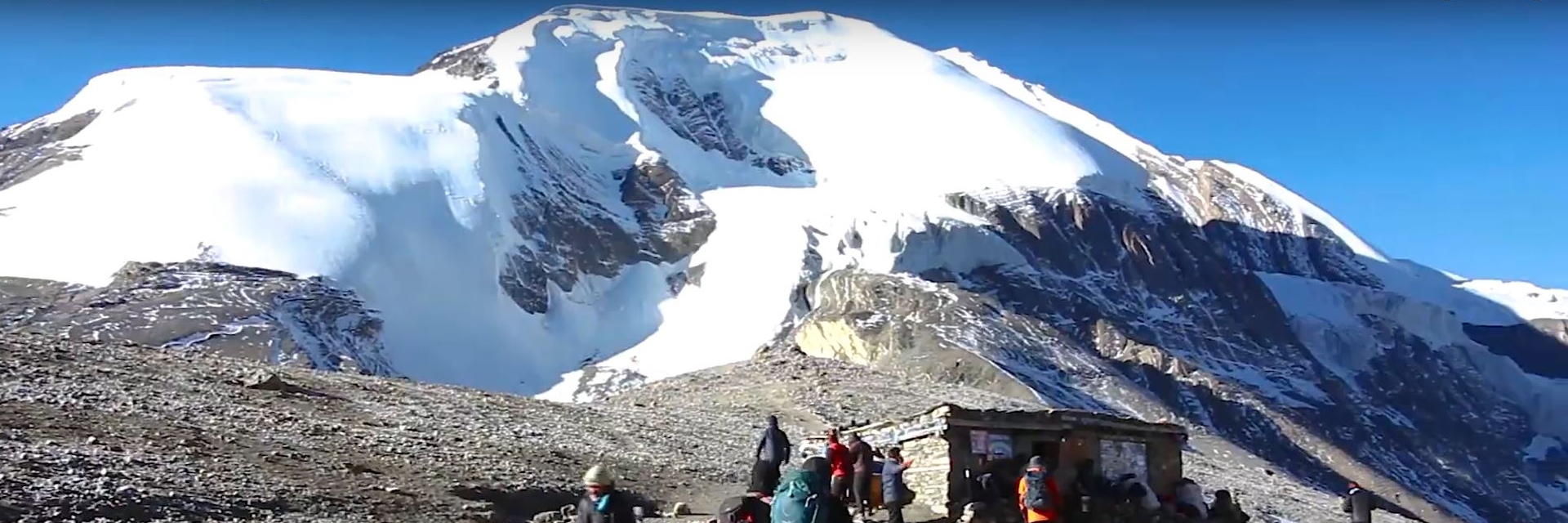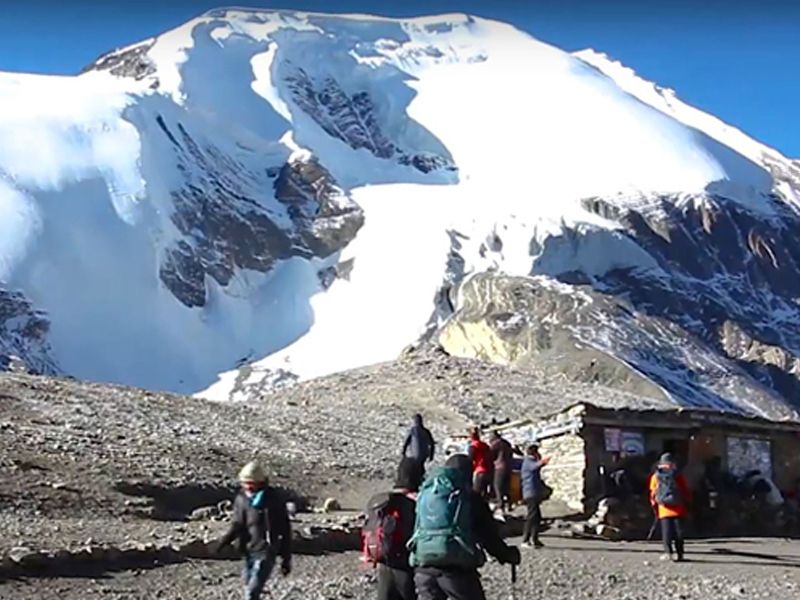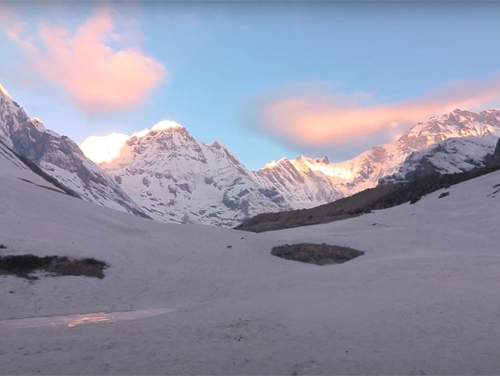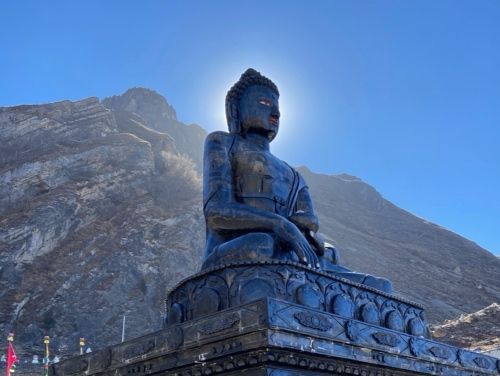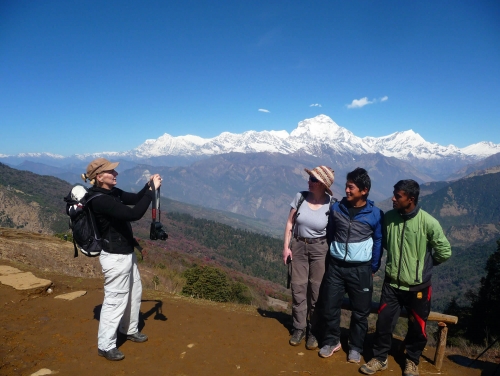Annapurna circuit trek will be amazing vista of nature,culture,tradition and lifestyle of wersten Nepal. It passes through the world deepest Kaligandaki george along with splendid view of Annapurna massif. Reach the summit at Thorong La Pass (5,416 m./17,769 ft.) and descend to Muktinath. You observe the best possible views of mountains over 8000-meter height. Experience the perfect proximal presence of the Himalayas.
It includes Annapurna Range (8091 m), Dhaulagiri Massif (8,167 m/26,795 ft.), Manaslu Range (8,163m/26,759 ft.), Pisang Peak (6,091 m/19,984 ft.), Thorong Peak (6,144 m / 20,275 ft.). Winding through the world's tallest mountains, deep gorges, high passes, hot springs, and charming villagers makes the trek memorable.
Is Annapurna circuit trek right for you?
First opened in 1977, Annapurna Circuit Trek has been one of the most charming trek routes. This trek attracts thousands of tourists with beautiful peaks, high passes, diverse terrain, and different cultures. Hiking Annapurna Circuit is an incredible and life-changing experience you can have. You will be absolutely captivated by the area from the very first day of your trek.
Annapurna Circuit Trek in the Himalayas lies in the north-western part. This is the most versatile trekking region in Nepal. This trek is also described as the land ofcontrasts. It covers the country's windiest, driest and wettest place in a single trek. Annapurna Circuit Trekking experience and feel like going back to the past.
The beauty and wilderness are still preserved and intact in their purest form. The trekking route covers two furious river valleys called Marshyangdi and Kali Gandaki. The highest point of this trekking route is Thorong La Pass (5,416 m/17,769 ft.).
You will find many unique attractions during the trek like raging waterfalls, high passes, and villages. Beautiful sparkling blue color lakes and rivers add an elegant splash of color to the scenery. As you cross the pass, you will be amazed to see theMuktinath Temple, a famous Hindu pilgrimage site. Experience desert-like landscapes in Manang and Mustang in thetrans-Himalayan region.
Rugged trails surrounded by green hills, clustered houses, and hospitable people with their lifestyles make your trek worth remembering. Trekking to Annapurna Circuit enriches you with diverse flora and faunas with human settlements. During the trek, you will be crossingAnnapurna Conservation Area. You will also come into contact with climatic variation from subtropical to alpine. There is a distinction in vegetation, wildlife, and socio-cultural aspects of the region.
You may also get a chance to explore endangered animals like musk deer, blue sheep, and snow leopard. During the trek, you will cross fields, subtropical woodlands, cascades, and typical towns. Inspect a medieval-like village with preserved Thakali and Gurung culture. Most of the trials are influenced by Buddhist culture. Pass through decorated trials with fluttering prayer flags and mani walls.
Annapurna Circuit Trek
Annapurna Circuit Trek gives you an experience of rural Nepal. Witness Annapurna from close in a very short time. The best time to do Annapurna Circuit Trek for 12 days is spring (March to May) and Autumn ( September to November).
We have departure dates to join this Annapurna trek in the Spring and Autumn. You can join any dates that suit you. If you desire to have a personal trek and customize the Itinerary, we are flexible to customize it.
Join this incredible journey with us for stunning views of the panoramic Himalayas. You will be able to see the beauty from different perspectives, which is truly blissful. This trek is perfect for anyone who wishes to enjoy the strange glory of the Nepalese Himalayas. Specifically, while getting a charge out of a simple trek.
In addition to this trip, other incredible alternative trekking routes are seeking more significant challenges. You can choose any trip from Annapurna Region Trekking like Annapurna Base Camp Trek, Mohare Danda, and Mardi Himal Trek. For more Annapurna Trekking packages, you can explore more exclusive Himalayan Odyssey tour packages.
Annapurna Circuit Trek 12 Days Route
The trekking route of the Annapurna Circuit Trek 12 days can diversify on the package you prefer. The trek itinerary generally varies from 12-20 days. You can choose the one based on the number of days possible for trekking on your schedule.
Usually, the Annapurna Circuit Trekking begins with a scenic drive from Kathmandu to Dharapani. We then enter into the striking Chame (2,670 m) and Pisang(3,230 m) viaBesisahar. We enter the majestic Manang town(3,450 m), where we acclimatize for the first time during the trek.
On the next day, we will acclimatize and investigate the region through short hikes. The trek starts to get a bit tough as we cross through the altitude of 4000 m as we reach Sri Kharaka village (4,060 m). If you choose the longer itinerary, perceive the Tilicho Lake (4,949 m). Also, explore the surreal Tilicho Base Camp(4.200 m).
The shorter duration trek jumps past these routes to arrive at the meadows of Sri Kharka and Yak Kharka. The treks are short but need long climbing and descent that may physically drain you. The most challenging part of the trek is the majestic Thorong La Pass, the highest point of the trek.
The trek then leads to the sacred temple of Muktinath (3,800 m) from Thorong La pass. We worship at the pilgrimage site of Muktinath. Both Hindu and Buddhist tourists come to wash away their sins. You will get to acclimatize and relax well at various points of the trek. The trails throughout the Muktinath area meet with the motor roads in the area. The buses and jeeps travelling along the route make the path dusty and noisy. Hence, many trekkers avoid trekking and take Jeep directly to Muktinath. You can also catch a straight flight from Jomsom to Pokhara.
If you wish to explore the Annapurna Region and expand the Annapurna Circuit Trek length. You can trek to the gorgeous Ghorepani-Poon hill viewpoint. From here you can witness a majestic sunrise view of the white peaks. We then tumble downhill to Tikhedhunga (1,550 m), drive to Nayapul, and further Pokhara (910 m). After some celebration of the successful competition of trek,drive to Kathmandu.
How hard is Annapurna Circuit Trek?
The Annapurna Circuit Trek is a challenging journey in terms of difficulty. Annapurna Circuit Trek has varied paths that can be rugged, steep, or slippery. The trail additionally holds a lot of stairways which can add more difficulty than walking straight. Additionally, the high and varying altitude creates some trouble during the trek.
The route takes you to 5,416 m, which is the height of Thorong La, the highest point of this trek. This part of the trek is tough due to the heavy snowfall and extreme cold throughout the year. You make your way within several most demanding areas, rough, dry, and steep most of the time. This adds to the Annapurna Circuit Trek difficulty level more.
Unlike many other trips, you cannot level down the Annapurna Circuit Trek difficulty level. You may skip some parts of the trail, but you will miss the best parts away from the trek. The only thing you can do is to prepare for the trek physically. Various cardiovascular exercises and activities like cycling, hiking, swimming, and jogging will help you gain the fitness levels required for this trek. It helps to level up stamina, their ability to adapt to the environment, and their trekking skills.
The climate is another irregular phase that will affect your Annapurna Round Trek. Depending on the weather situation, the difficulty, and challenges that you will encounter on the trial matter. The trek gives us ample acclimatization and rest. With the correct arrangement, you can achieve the trek without any trouble.
What will be the Cost for Annapurna Circuit Trek?
When you are thinking about exploring the Himalayas like Annapurna Circuit, there will be many factors to consider, like route, best time, and how fit we need to be? But one of the most important confusion will be, "How much does Annapurna Circuit Trek cost?"
Whether you are budget dependent or not, it is essential to consider how much you want to pay for the trip and what is the actual cost. The baseline cost of the Annapurna Circuit Trek will depend on the number of variables. Your cost will change based on how comprehensive you want your trip to be.
On average Annapurna Circuit, the trek will generally be 10-18 days, and the cost is generally somewhere between USD 1547 to USD 1455. This price includes domestic flights, trekking permits, meals, professional trekking guides, porters, accommodation, entry fees, and others. You will get some discounts if you are in groups. The cost of Annapurna Circuit Trek highly depends upon travelling in private or in a group.
Annapurna Circuit Permit Cost
- Annapurna Conservation Area Permit (ACAP)
The entry fee per person, for SAARC is USD.10 per person, and for other Nationals USD30 per person.
Annapurna Circuit Trek Altitude
Photo: Altitude Chart

